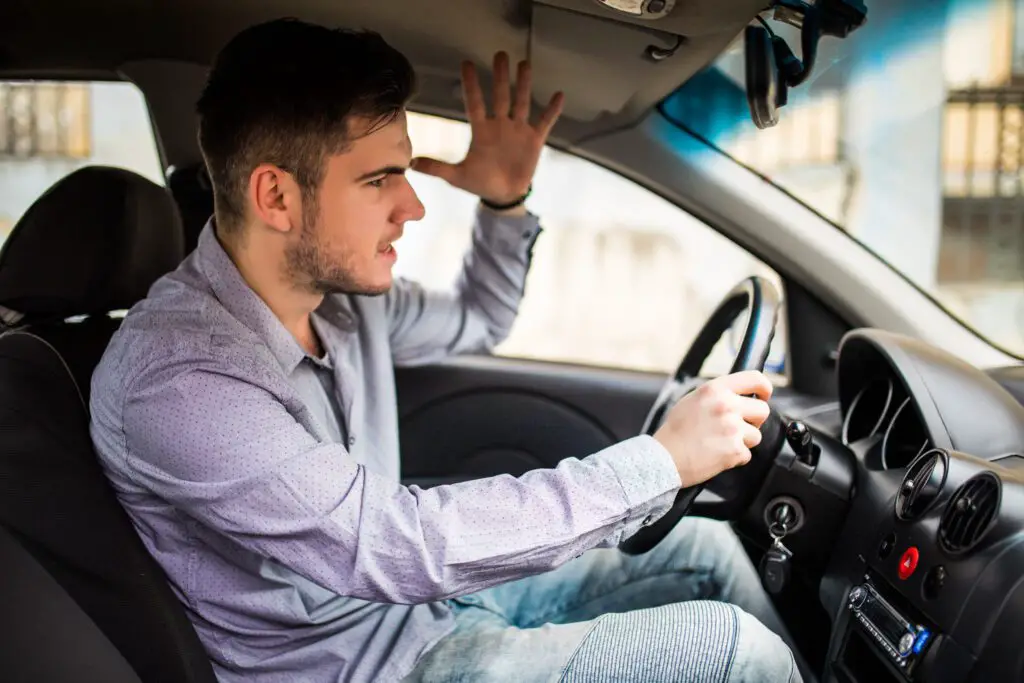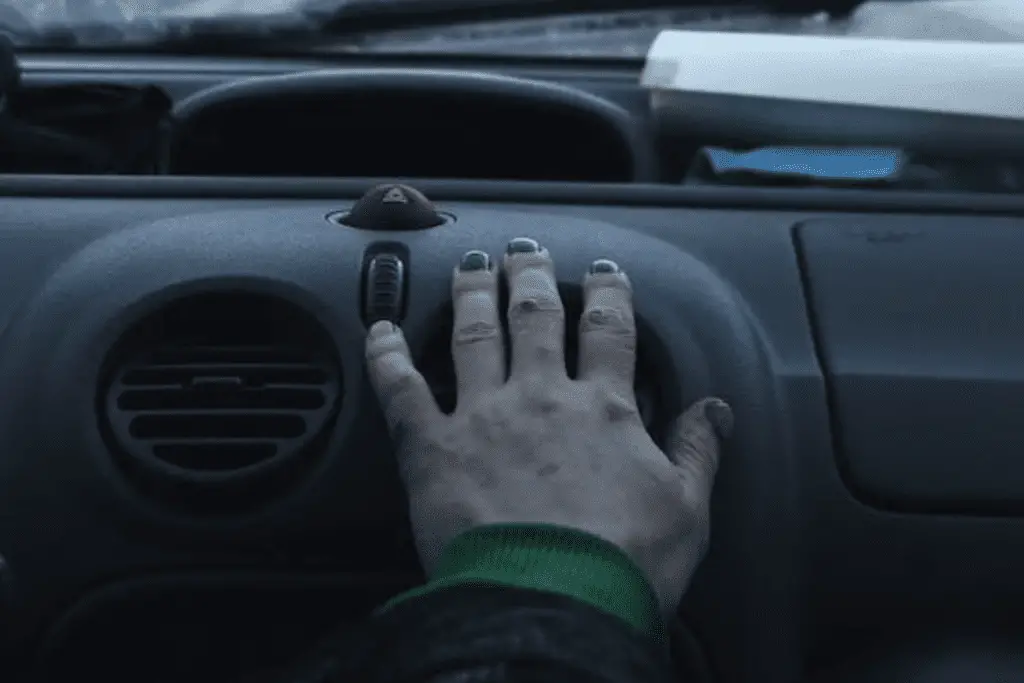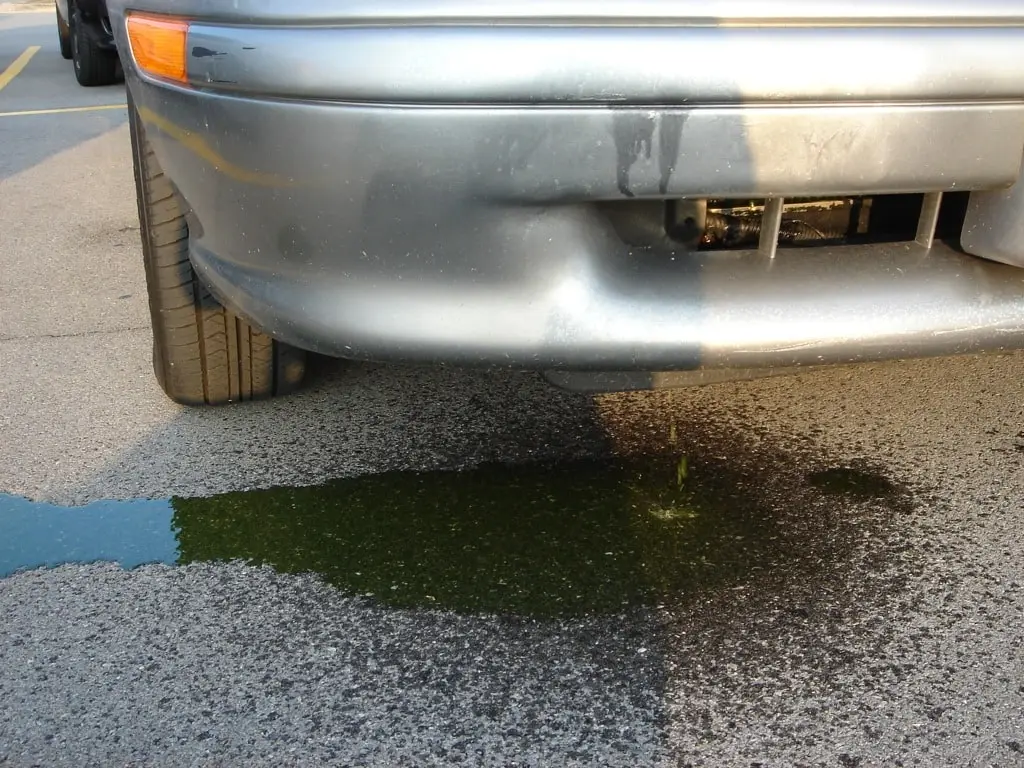If your car begins to overheat while idling but seems to cool down once you start driving, you likely have an issue with your cooling system. An overheating engine can lead to expensive repairs if left unchecked, so it’s important to diagnose and address the problem right away.
In this comprehensive guide, we’ll explore the common causes Why Your Car Overheats When It’s Idling, signs to watch out for, how to respond when it happens, frequently asked questions, and prevention tips. Whether you’re a DIYer or plan to visit a professional mechanic, the information below will help you get to the bottom of the overheating issue.
Common Causes of Overheating While Idling
There are several potential culprits Why Your Car Overheats When It’s Idling but not while driving. Here are some of the most common causes:

Faulty Radiator Fan
The radiator fan is a critical component that keeps air flowing through the radiator to cool the antifreeze/coolant when the car isn’t moving fast enough to generate airflow on its own. If the fan blades are damaged, the motor is failing, or the fan simply isn’t kicking on, the coolant can’t shed heat efficiently while idling. This leads to overheating.
Broken Thermostat
The thermostat controls the flow of coolant in the engine. When cold, it blocks coolant flow so the engine can warm up faster. Once at operating temperature, it opens to allow coolant flow to prevent overheating. A stuck closed or broken thermostat will block proper coolant circulation, leading to overheating at idle.
Low Coolant Level
Coolant (also called antifreeze) absorbs heat from the engine and keeps everything at the proper operating temperature. If the coolant level is low due to leaks or neglecting to top it off, the cooling system can’t work properly. Insufficient coolant leads to overheating when idling.
Slipping Fan Clutch
The fan clutch allows the radiator fan to disengage when it’s not needed for cooling. If it’s slipping and not engaging properly, the fan won’t spin fast enough when idling to maintain proper cooling. This exaggerated lack of cooling at low speeds causes overheating.
Clogged Radiator
A radiator clogged with debris like leaves, bugs, and dirt prevents proper air flow. This starves the cooling system of airflow needed to lower coolant temperatures. Clogged radiators cause engines to run hotter, especially when idle and low speeds.
Bad Water Pump
The water pump circulates coolant through the engine. If it’s failing, coolant won’t flow adequately through the engine and radiator. Stagnant or limited coolant flow leads to hot spots and overheating issues.
Signs Your Car is Overheating While Idling
Watch for these common warning signs that your car’s engine is running too hot when idling:
- High temperature gauge reading, especially if it’s creeping into the red zone
- Steam or smoke coming from the hood
- Sweet smelling steam from a coolant leak
- Bubbling or boiling coolant/antifreeze
- Loud fan that runs constantly when idling
- Groaning water pump noise
- Check engine light or temperature warning light
Why Your Car Overheats When It’s Idling? Don’t ignore these overheating symptoms when idling. Shut the engine down immediately if it begins to overheat to avoid severe engine damage. Get it towed to a repair shop.
What to Do if Your Car Overheats at Idle
If you notice your car beginning to overheat while stopped in traffic or idling in park, follow these steps:
- Safely pull over and shut off the engine immediately. Don’t try to limp home. The longer an overheated engine runs, the more damage occurs.
- Pop the hood but don’t open it until the engine has cooled. Rushing to open a hot engine bay can burn you.
- Once cooled, check the coolant level and top it off if low. Look for leaks around hoses, the radiator, water pump, and thermostat housing.
- Start the engine and turn the heater to full blast. This helps dissipate heat from the engine. Observe the temperature gauge.
- If the overheating persists, turn it off and have the car towed to a repair shop. Don’t continue driving an overheated engine.
- Major engine damage like blown head gaskets can result from sustained overheating. Have a mechanic inspect it promptly.
Why Does My Car Overheat When Idling But Not While Driving?
If your car only overheats when stopped and idling, but the temperature comes down once driving again, the most likely culprit is an issue with the cooling fan or fan clutch.
At idle and low speeds, the cooling fan is critical for airflow through the radiator as the car moves too slowly for ram air to sufficiently cool things down. If the fan fails to engage or spin properly when the engine gets hot, overheating occurs.
Once you get moving at higher speeds, ram air is enough to cool the radiator and engine sufficiently. That’s why the temperature comes back down when driving again. The same principle allows an engine to overheat from idling too long when stopped in traffic.
Why Your Car Overheats When It’s Idling? Faulty fan operation is the most common cause, but a stuck thermostat, low coolant, and other cooling system issues can also cause overheating specifically when idling or at low speeds.
FAQs About Why Your Car Overheats When It’s Idling
To expand on the topic further, here are answers to some of the most frequently asked questions:
Can You Drive With an Engine Overheating Idle?
No, you should never drive a vehicle when the engine is overheating, even if it’s only happening at idle. The sustained high temperatures can warp cylinder heads, damage head gaskets, and ruin other engine components. Continuing to drive an overheated engine will only lead to catastrophic failure.
How Do You Fix a Car That Overheats When Idling?
Start by checking the coolant level and topping it off if low. Observe the temperature gauge and cooling fan operation. If it still overheats at idle, have it towed to a shop for diagnosis. A mechanic will check for leaks, test the fan clutches, thermostat, water pump, and coolant flow to pinpoint the overheating cause. Fixing it typically involves replacing the failed cooling system component.
Why Does My Car Overheat Then Go Back to Normal?
If your car overheats significantly while at a stop but the temperature drops down once driving again, the most likely culprit is the radiator cooling fan not working properly at idle and low speeds. As soon as you drive faster, ram air through the radiator brings the temperature back down. A faulty fan clutch or motor are common causes.
What are Signs of a Bad Thermostat?
Symptoms of a failing thermostat that’s stuck closed and blocking coolant flow include:
- Engine overheating, especially when first started or at idle
- Significantly longer warm-up times
- Excessively low temperature gauge readings
- Lack of heat from the heater
- Constant coolant flow even when cold
Replacing a bad thermostat restores proper coolant control and flow to prevent overheating issues.
What are Signs of a Bad Water Pump?
Watch for these symptoms of a failing water pump:
- Engine overheating when driving or idle
- Coolant leaks from the water pump housing
- Noisy belt-driven water pump with bearing damage
- Leaking or weeping water pump seals
- Engine coolant contaminated with metal shavings
- Engine coolant boiling over or bubbling in the radiator or reservoir
Why Your Car Overheats When It’s Idling? Replacing the water pump is required to restore proper coolant circulation through the engine and prevent catastrophic overheating damage.
Tips to Prevent Engine Overheating When Idling
To help avoid overheating problems before they happen:
- Check engine coolant level frequently and top off when low
- Change coolant per manufacturer interval (typically every 3-5 years)
- Ensure proper coolant mix (usually 50/50 antifreeze and water)
- Flush debris and rust from radiator periodically
- Replace worn water pump and thermostat
- Check fan clutch engagement regularly
- Address radiator damage immediately
- Fix any coolant leaks promptly
Investing in regular cooling system maintenance goes a long way in preventing temperature issues and engine damage, saving you money and hassle down the road.
When to Seek Professional Help
While a savvy DIYer can perform their own cooling system inspections and basic repairs, it’s best to enlist a professional mechanic for assistance if:
- You lack the expertise, tools, or resources to diagnose issues
- The engine overheated significantly or multiple times
- There are leaks, damage, or other underlying issues found
- The check engine light indicated a temperature-related error code
- Replacing major components like the radiator, head gasket, or thermostat housing is required
Severe overheating or underlying problems are best left to trained technicians with the skills and equipment to fully diagnose and repair your car. Seeking help promptly also prevents further damages.
The Bottom Line – Why Your Car Overheats When It’s Idling
If your engine starts to overheat specifically when idling, don’t ignore it – diagnosis and repairs are needed right away. In most cases, it indicates a problem with the radiator cooling fan not properly engaging when at a stop. Other common causes include a bad thermostat, low coolant, and general cooling system failures.
Why Your Car Overheats When It’s Idling? Address overheating issues immediately to avoid severe and expensive engine damage. Allowing an overheated engine to keep running leads to head gasket failure, cylinder warping, and other major repairs. Understand the common causes, warning signs, and how to respond when it happens so you can get your car safely off the road and into the shop when needed.

